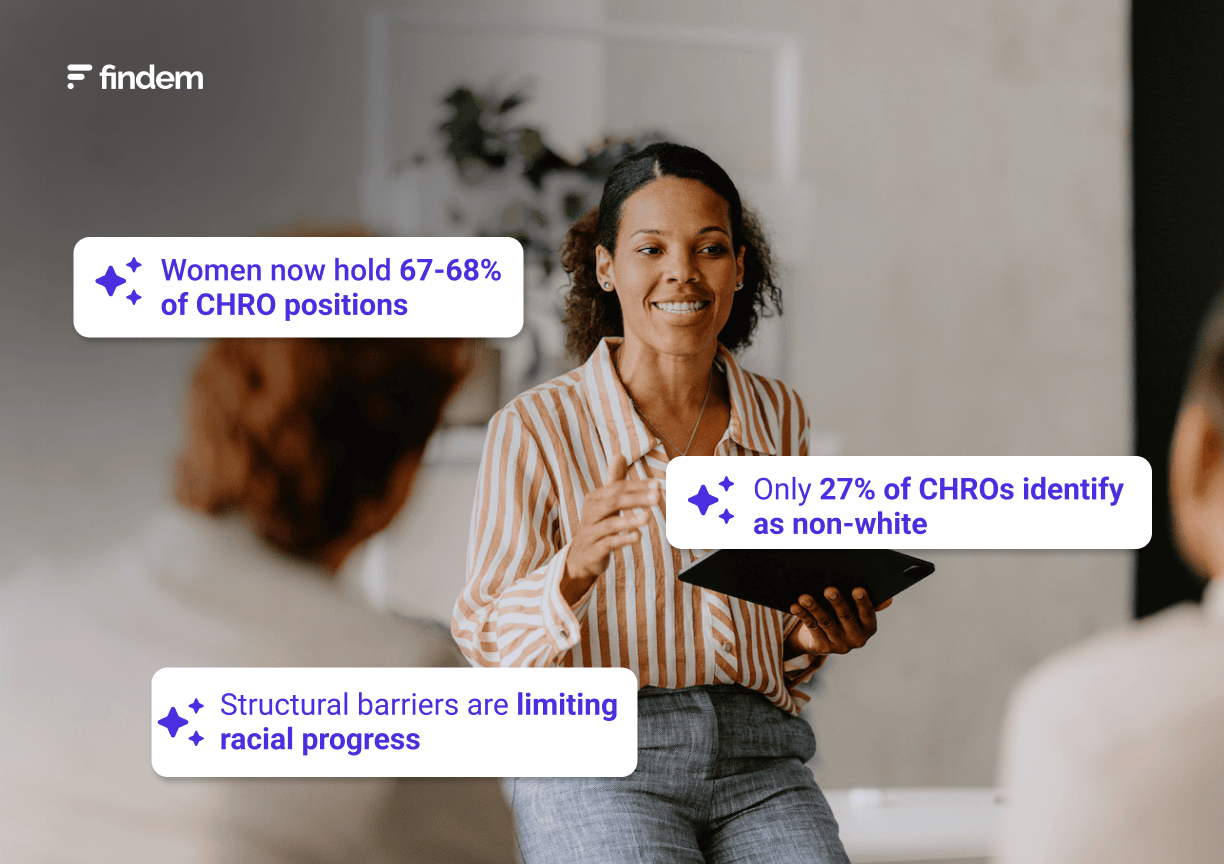.svg)
LGBTQIAP+ leadership at Fortune 500 companies and why it matters
.svg)

To celebrate Pride Month, we’re doing more than updating the Findem logo with the rainbow flag. This year’s theme — We Show Up — emphasizes the power of sharing experiences, leading by example, and uniting as a community.
Since I joined Findem over a year ago, we've prioritized DEIB. We recently launched our first ERG, Pride at Findem, to support our LGBTQIAP+ employees. Now, in light of Pride Month, I'm excited to share new insights from our platform about LGBTQIAP+ representation and alliance at Fortune 500 companies. I wanted an empirical answer to an often overlooked question:
Does LGBTQIAP+ visibility at the leadership level impact employees? What about employers?

As a member of the community, I can confidently say that leadership visibility matters. Now, we have the data to validate that LGBTQIAP+ employees are more than twice as likely to leave companies where they don’t see themselves represented in leadership roles. This turnover is costly and prevents companies from attracting top talent.
Looking to the future, with 28% of Gen Z identifying as LGBTQIAP+, companies lacking a supportive culture for being publicly out will face serious retention problems.
What is LGBTQIAP+?
For our research, LGBTQIAP+ includes publicly self-identified individuals and allies involved in ERGs or any form of LGBTQIAP+ advocacy. Leadership is defined as vice president or above, focusing on US-based employees in Fortune 500 companies.
Publicly identifying can be daunting, especially without leadership support. It is important to keep in mind that individuals may feel comfortable being out with a subset of trusted colleagues but have not yet publicly disclosed their identity or allyship.
Breaking down LGBTQIAP+ in the workforce today
Our platform's 3D data shows that less than 1% of leadership roles in Fortune 500 companies are held by LGBTQIAP+ individuals, while about 7% of the US adult population and 28% of Gen Z identify as such.

Why is this discrepancy important? Gen Z is soon to surpass Millennials as the most populous generation on Earth. As Gen Z becomes the predominant generation in the workforce, they will make the majority of employment decisions.
Gen Z cares deeply about working for socially responsible employers, with 77% saying they prioritize working for employers whose values align with their own. Companies without a supportive culture risk losing this talent before applications are even submitted.
The importance of LGBTQIAP+ representation
The lack of LGBTQIAP+ representation in leadership will have significant impacts on employers. Gen Z will shape company perception based on clear inclusivity practices. Those neglecting thoughtful hiring strategies will miss out on top talent and incur unnecessary losses.
We reviewed the average turnover rate for LGBTQIAP+ individuals and allies across Fortune 500 companies. Here’s what we found:
- A 15% turnover rate at the 5 companies with the highest number of LGBTQIAP+ employees
- A 7% turnover rate at the 5 companies with the highest number of LGBTQIAP+ leaders
That's a 2x attrition rate for companies with the most LGBTQIAP+ employees compared to those companies with the most leadership representation.
Replacing exiting employees can cost up to 2 times the employee's annual salary. Missed deadlines and Glassdoor reviews aside, the OpEx required to offset higher attrition is a business expense that should not be overlooked.
Visibility and representation matter, especially at the leadership level. Employees need their beliefs and values to be understood and embraced. With LGBTQIAP+ employees typically lacking role models in management, only about half feel they can relate to leadership.
Empathetic leaders who lead by example create better environments for everyone, impacting attraction, retention, and progression.
Show up for LGBTQIAP+ employees
The purpose of this reflection is not about forcing employees to publicly identify. Embracing one’s identity is a personal journey.
Our findings show that successful employers hire, retain, and nurture LGBTQIAP+ employees by prioritizing representation and visibility. Promoting an inclusive culture and providing resources for employees is a great start. Creating a safe environment for employees to share their identity will require dedicated efforts, varying across organizations.
If you’d like to view these same findings for your own organization, please contact us to learn more about Findem’s 3D data. We connect people and company data over time to deliver unmatched insights into every candidate.










